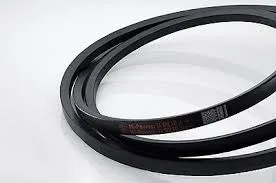- Arabic
- French
- Russian
- Spanish
- Portuguese
- Turkish
- Armenian
- English
- Albanian
- Amharic
- Azerbaijani
- Basque
- Belarusian
- Bengali
- Bosnian
- Bulgarian
- Catalan
- Cebuano
- Corsican
- Croatian
- Czech
- Danish
- Dutch
- Afrikaans
- Esperanto
- Estonian
- Finnish
- Frisian
- Galician
- Georgian
- German
- Greek
- Gujarati
- Haitian Creole
- hausa
- hawaiian
- Hebrew
- Hindi
- Miao
- Hungarian
- Icelandic
- igbo
- Indonesian
- irish
- Italian
- Japanese
- Javanese
- Kannada
- kazakh
- Khmer
- Rwandese
- Korean
- Kurdish
- Kyrgyz
- Lao
- Latin
- Latvian
- Lithuanian
- Luxembourgish
- Macedonian
- Malgashi
- Malay
- Malayalam
- Maltese
- Maori
- Marathi
- Mongolian
- Myanmar
- Nepali
- Norwegian
- Norwegian
- Occitan
- Pashto
- Persian
- Polish
- Punjabi
- Romanian
- Samoan
- Scottish Gaelic
- Serbian
- Sesotho
- Shona
- Sindhi
- Sinhala
- Slovak
- Slovenian
- Somali
- Sundanese
- Swahili
- Swedish
- Tagalog
- Tajik
- Tamil
- Tatar
- Telugu
- Thai
- Turkmen
- Ukrainian
- Urdu
- Uighur
- Uzbek
- Vietnamese
- Welsh
- Bantu
- Yiddish
- Yoruba
- Zulu
ag. . 19, 2024 04:38 Back to list
Fiat Timing Belt Maintenance and Replacement Tips for Optimal Engine Performance
Understanding Timing Belt Maintenance for Fiat Vehicles
When it comes to automotive maintenance, one of the most critical components that often gets overlooked is the timing belt. This vital part is essential for the engine's performance, and in vehicles like Fiat, the timing belt plays a crucial role in ensuring that the engine's valves open and close at the correct times. Understanding the timing belt's function, maintenance, and replacement schedules can aid Fiat owners in prolonging their vehicle's lifespan and avoiding costly repairs.
The Purpose of a Timing Belt
The timing belt is a rubber belt that connects the crankshaft to the camshaft in an engine. The crankshaft rotates as the engine runs, and the timing belt ensures that the camshaft turns in sync with it. This synchronization is vital for the proper operation of the engine as it ensures that the engine’s valves open and close in perfect timing with the pistons in the cylinders. A malfunctioning timing belt can lead to significant engine damage, which is why understanding its maintenance is crucial for every Fiat owner.
Signs of a Failing Timing Belt
As with any automotive component, timing belts do not last forever. Fiat recommends checking the timing belt based on mileage or years, typically around 60,000 to 100,000 miles, but this can vary depending on the model. Some signs that might indicate a failing timing belt include
1. Engine Noise A ticking or thumping noise from the engine compartment may indicate a loose or damaged timing belt. 2. Engine Performance Issues Hesitation or a decrease in power while driving can point toward timing belt problems.
3. Oil Leaks Oil leaking from the front of the engine may suggest a worn-out timing belt.
timing belt fiat

4. Dashboard Warning Lights If warning lights related to engine performance light up, it's wise to have the timing belt checked.
Maintenance and Replacement
To ensure the longevity of the timing belt, regular maintenance is crucial. This includes adhering to the manufacturer's recommended service intervals and having routine inspections performed by a qualified technician. During these inspections, the technician will check for any signs of wear such as cracks, fraying, and stretching.
If it's determined that the timing belt requires replacement, it's also advisable to replace related components, such as the tensioner and water pump, as they often work in conjunction with the timing belt. Neglecting to replace these parts could lead to more complications down the road.
The Importance of Professional Help
When it comes to replacing the timing belt in a Fiat, it's recommended to seek the help of a certified mechanic. Timing belt replacement is a complex process that requires specific knowledge of the vehicle’s engine configuration. A professional can ensure that the belt is installed correctly and that all necessary components are functioning optimally.
Conclusion
In summary, the timing belt is a vital part of Fiat vehicles that merits regular attention. Understanding its function, recognizing the signs of wear, and adhering to a proper maintenance schedule can vastly improve your vehicle's performance and reliability. For Fiat owners, investing time and resources into timing belt maintenance can prevent significant breakdowns and extend the life of their vehicle, making for a smoother and safer driving experience. Regular check-ups and prompt replacement when necessary can save on costly repairs and ensure that your Fiat continues to provide the reliable performance you expect.
-
Korean Auto Parts Timing Belt 24312-37500 For Hyundai/Kia
NewsMar.07,2025
-
7PK2300 90916-T2024 RIBBED BELT POLY V BELT PK BELT
NewsMar.07,2025
-
Chinese Auto Belt Factory 310-2M-22 For BMW/Mercedes-Benz
NewsMar.07,2025
-
Chinese Auto Belt Factory 310-2M-22 For BMW/Mercedes-Benz
NewsMar.07,2025
-
90916-02660 PK Belt 6PK1680 For Toyota
NewsMar.07,2025
-
drive belt serpentine belt
NewsMar.07,2025

